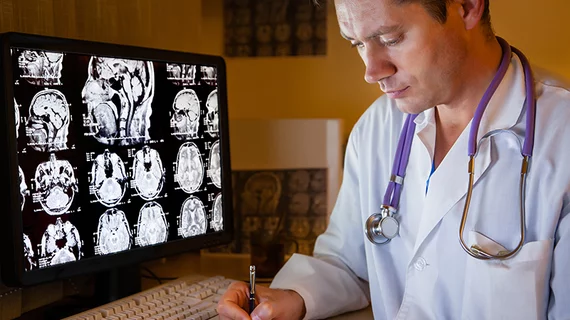Many radiologists believe accessing outside imaging exams and reports benefits their own workup, but few expressed confidence in the quality of these resources, according to a new survey.
In fact, only 32% of imaging experts felt confident in the quality of images from other facilities and even fewer expressed assurance with outside reports, researchers noted Feb. 5 in the American Journal of Roentgenology. The results indicate that even if physicians could automatically swap images between institutions, a high-tech informatics platform may not push the specialty past the finish line.
Radiologists may feel the need to perform additional exams themselves, particularly for advanced modalities such as CT and MRI, resulting in the same overutilization and waste the specialty is trying to correct, Andrew B. Rosenkrantz, MD, with NYU School of Medicine, and colleagues wrote.
“Adoption of information technology solutions for fully automated integration of outside images and reports into existing systems and workflows would help maximize the clinical impact of the outside examinations,” they noted. “Nonetheless, even if seamless integration is achieved, potential issues remain regarding providers' confidence in outside studies, particularly those performed at community facilities.”
And that’s a problem, the team argued. Fragmentation in the U.S. health system is severe, and health information exchanges, such as New York’s Healthnix, have long been held as a potential solution to reduce costs, enhance care and limit overutilization.
Even the most up-to-date systems using cloud-based solutions don’t offer the full integration radiologists need. And few organizations are able to adopt these high-tech applications, the group noted. Out of the 34 of 101 radiologist who use Healthnix—the nation’s largest HIE—“very few” had ever accessed imaging reports from other institutions via stand-alone portals, the survey showed.
To gain a better understanding on this issue, Rosenkrantz et al. surveyed radiologists and emergency medicine providers at a single center. A total of 33.6% of radiologists and 19.3% of emergency medicine clinicians replied—a limitation, but numbers “typical” of physician surveys, the authors wrote.
They found that radiologists felt more confident in their own diagnoses when using outside images, citing unexpected information, changes in patient management and perceived reductions in repeat imaging rates. However, both groups of physicians lacked confidence in image interpretations. Radiologists were also much more distrustful of outside images and reports compared to emergency specialists.
“These findings suggest that automated solutions for efficient outside image sharing may require reinterpretation of the outside imaging examinations by radiologists…in order for outside imaging examinations to achieve the same impact as prior examinations performed within the same institutional network,” the researchers wrote.
These negative opinions could be related to the “substantial challenges” in accessing outside exams and the biases of academic medicine, the authors noted. But radiologists were only moderately confident in their ability to access outside images and even less so for reading corresponding reports. At the author’s institution, outside images are placed in the EHR, not the PACS image readers usually work through. And not one radiologist surveyed gained access to reports via Healthnix.
Given these concerns, some health system have installed a formal system for second-opinion reads. But the results of this survey, according to the authors, suggest a change is needed to push widespread adoption of more user-friendly systems.
“Our findings are intended to help guide successful future efforts in the implementation and widespread adoption of optimal integrated cloud-based image sharing solutions,” the group concluded.

